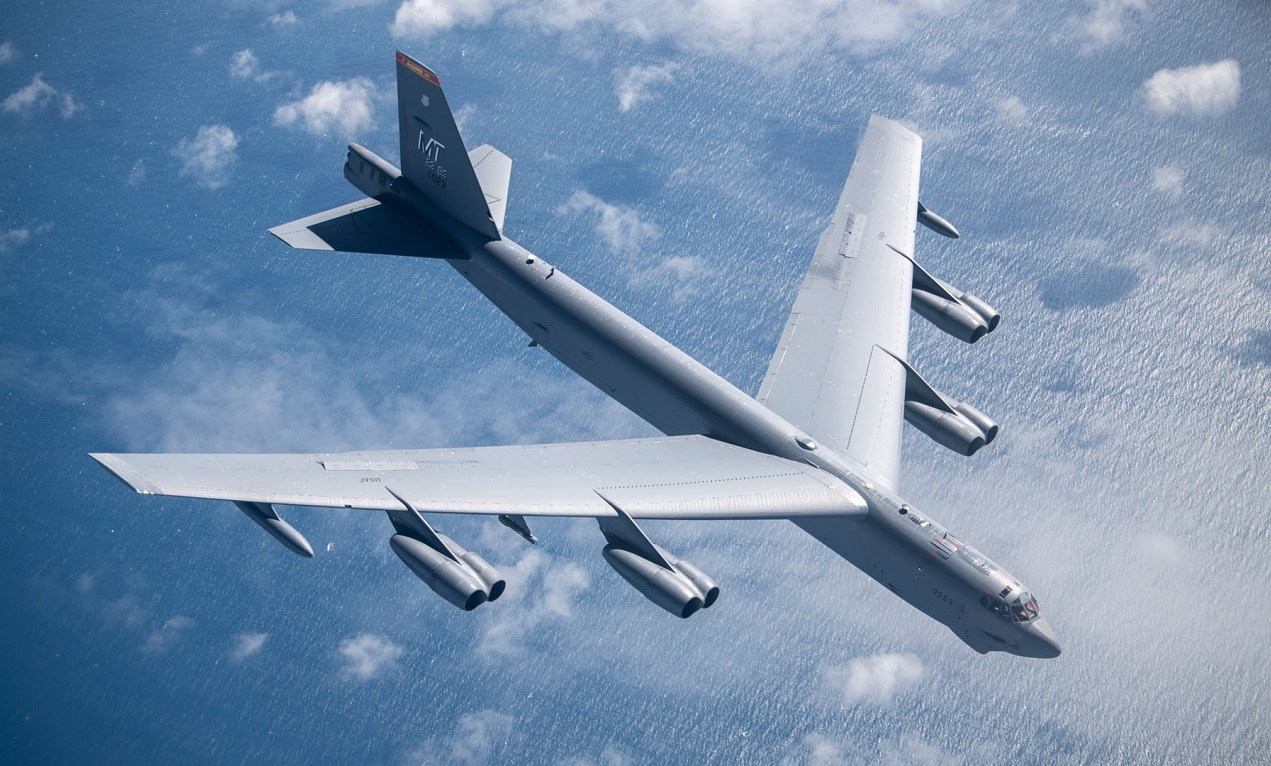The Second World War demonstrated the awful power of strategic bombing and the nuclear bombs dropped on Hiroshima and Nagasaki changed what strategic bombing truly meant. As the 1940’s drew to a close, the newly formed U.S. Air Force (USAF) turned to American aircraft designers to produce a new strategic bomber capable of facing off against the Soviet menace. Enter the B-52 “Stratofortress.”
Mid-Century: A New Era of Bombers
The mid-twentieth century saw an explosion of aircraft design as jet engines, lightweight metal fuselage skins, and the swept wing concept gave manufacturers a wealth of new settings and features to tweak and exploit. The Boeing Company seemed initially reluctant to embrace these changes; their first entry to the USAF for a strategic bomber was essentially a larger, heavier B-29 with straight wings and turboprop engines.
After some prompting, Boeing added a sweep to the wing of their proposed model and, eventually, jet engines.
The Reign of the BUFF
Once Boeing completed its proof of concept, they were off to the races. The following decade would see several changes in the B-52, taking it from the A to the H model. While earlier variants had limited runs and service, with several being converted to test platforms for rocket planes or NASA or serving as crew trainers, the later models flew extensively over Vietnam. In particular, the D model – which received a “Big Belly” upgrade allowing it to carry up to 84 Mk-82 500 lb bombs.
Apart from conventional roles in Vietnam and later, the Middle East, the B-52has been the Strategic Air Command’s mainstay bomber for sixty years. In this role, the Stratofortress is deployed as one of the legs of America’s “nuclear triad”, serving alongside Inter-Continental Ballistic Missiles and nuclear missile submarines as a deterrent force.
So, What’s New?
Sixty years of service is a long time without an upgrade and the B-52 is primed now to receive a long-awaited update. The major difference is in power plant, which is somewhat fitting considering that was the last major alteration that resulted in a designation change. Going forward, the Stratofortress will be outfitted with Rolls-Royce F130 turbofan engines. The new engines will provide the B-52 with greater range and fuel efficiency while decreasing maintenance and operating costs.
According to Sandboxx News, senior material leader for the B-52 division said “the needs of the new engines will be significantly different; unlike the TF33s installed in the 1960s, they won’t need scheduled “off-wing” maintenance, or tending that requires removal from the aircraft. Also, he said, the internal software and digitized aspects of the engines – completely different from the legacy ones – will require different attention, though the operation of the bomber itself is expected to remain largely the same.”
The enhanced B-52 is also getting upgraded cockpit with big glass displays. New radars, AN/APG-79 active electronically scanned array radar will be incorporated in the bomber’s new design. Additionally, the airframe will see an elimination of the AN/ASQ-151 Electro-Optical Viewing System and AN/AAQ-6 Forward Looking Infrared – used in low level flight, Cold War-era nuclear tactical doctrine called for low level insertion to avoid detection and interception.
These have been supplanted already by targeting pods on pylons on the bombers left wing so they’re virtually useless. The last big addition is two humps on the top of the fuselage at the wing root.
While the Air Force has been cagey about what they are, industry experts and aviation buffs widely suspected it may be improved satellite comms which would enable Link-16.
B-52J or K?
One question remains as to the new designation of the aircraft which has remained the B-52H for over sixty years since its introduction with upgraded engines in 1961. Because the new radar systems will be installed on a much earlier timetable than the engines, it’s possible the USAF will go with the interim B-52J designation, swapping out for the B-52K once the engine upgrades are complete.
Regardless of the name, these new upgrades will keep the massive “bomb truck” relevant for decades to come.
MORE: The F-35 Now Comes in Beast Mode
MORE: Why the U.S. Navy Tried to Sink Their Own Aircraft Carrier
Maya Carlin, a Senior Editor for 19FortyFive, is an analyst with the Center for Security Policy and a former Anna Sobol Levy Fellow at IDC Herzliya in Israel. She has by-lines in many publications, including The National Interest, Jerusalem Post, and Times of Israel. You can follow her on Twitter: @MayaCarlin.

